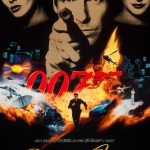The Witch (2015)

“The Witch”: A Haunting Exploration of Fear and Folklore Directed by Robert Eggers
Released in 2015, “The Witch” is a chilling horror film directed by Robert Eggers that has garnered critical acclaim for its atmospheric storytelling and meticulous attention to historical detail. Set in 1630s New England, the film delves into themes of religious fanaticism, isolation, and the disintegration of family bonds, all while immersing viewers in a world steeped in superstition and fear. With its slow-burn tension and powerful performances, “The Witch” stands out as a modern classic in the horror genre.

The narrative follows a Puritan family that is banished from their community and forced to live on the edge of a dark, foreboding forest. Patriarch William (Ralph Ineson) struggles to provide for his wife, Katherine (Kate Dickie), and their five children: Thomasin (Anya Taylor-Joy), the eldest daughter, and her younger siblings. When their newborn son mysteriously disappears, the family begins to unravel, plagued by paranoia and suspicion. As strange occurrences escalate, the film examines the psychological horrors that arise from isolation and the fear of the unknown, ultimately leading to a harrowing confrontation with witchcraft and evil.

Robert Eggers’ direction is characterized by a masterful control of atmosphere and pacing. The film employs a slow, deliberate build-up, allowing tension to simmer as the family’s dynamics shift under the weight of their fears. The cinematography by Jarin Blaschke captures the bleak and haunting beauty of the New England landscape, using natural light to enhance the film’s authenticity. Eggers’ commitment to historical accuracy is evident in the film’s dialogue, costumes, and setting, immersing the audience in the era’s oppressive social and religious context.

“The Witch” is primarily classified as a psychological horror film, but it also incorporates elements of folk horror and drama. The film delves into themes of faith, guilt, and the fragility of human relationships. Thomasin serves as a focal point, navigating the complexities of adolescence, familial loyalty, and the societal pressures imposed by her strict upbringing. Her journey reflects the struggle between innocence and the darker aspects of human nature, inviting viewers to ponder the fine line between good and evil.

Anya Taylor-Joy delivers a breakout performance as Thomasin, embodying the character’s internal conflict with nuance and depth. Her transformation from a dutiful daughter to a figure of suspicion and fear is both haunting and compelling. The supporting cast, including Ralph Ineson and Kate Dickie, provide strong performances that enrich the film’s emotional landscape, illustrating the devastating effects of fear and mistrust on family bonds.

Upon its release, “The Witch” received widespread critical acclaim, praised for its originality, thematic depth, and atmospheric tension. Critics lauded Eggers’ ability to craft a horror film that is as intellectually engaging as it is terrifying. The film’s unsettling imagery and sound design, including the haunting score by Mark Korven, contribute to its pervasive sense of dread, making it a standout in contemporary horror cinema.
In conclusion, “The Witch” is a masterfully crafted horror film that explores the depths of human fear and the consequences of isolation. Directed by Robert Eggers, the film combines psychological horror with rich historical context, creating an immersive experience that lingers long after the credits roll. With powerful performances and a haunting narrative, “The Witch” invites viewers to confront their own fears and the darker aspects of humanity. Its legacy as a modern horror classic is firmly established, ensuring that it remains a significant work in the genre for years to come.










